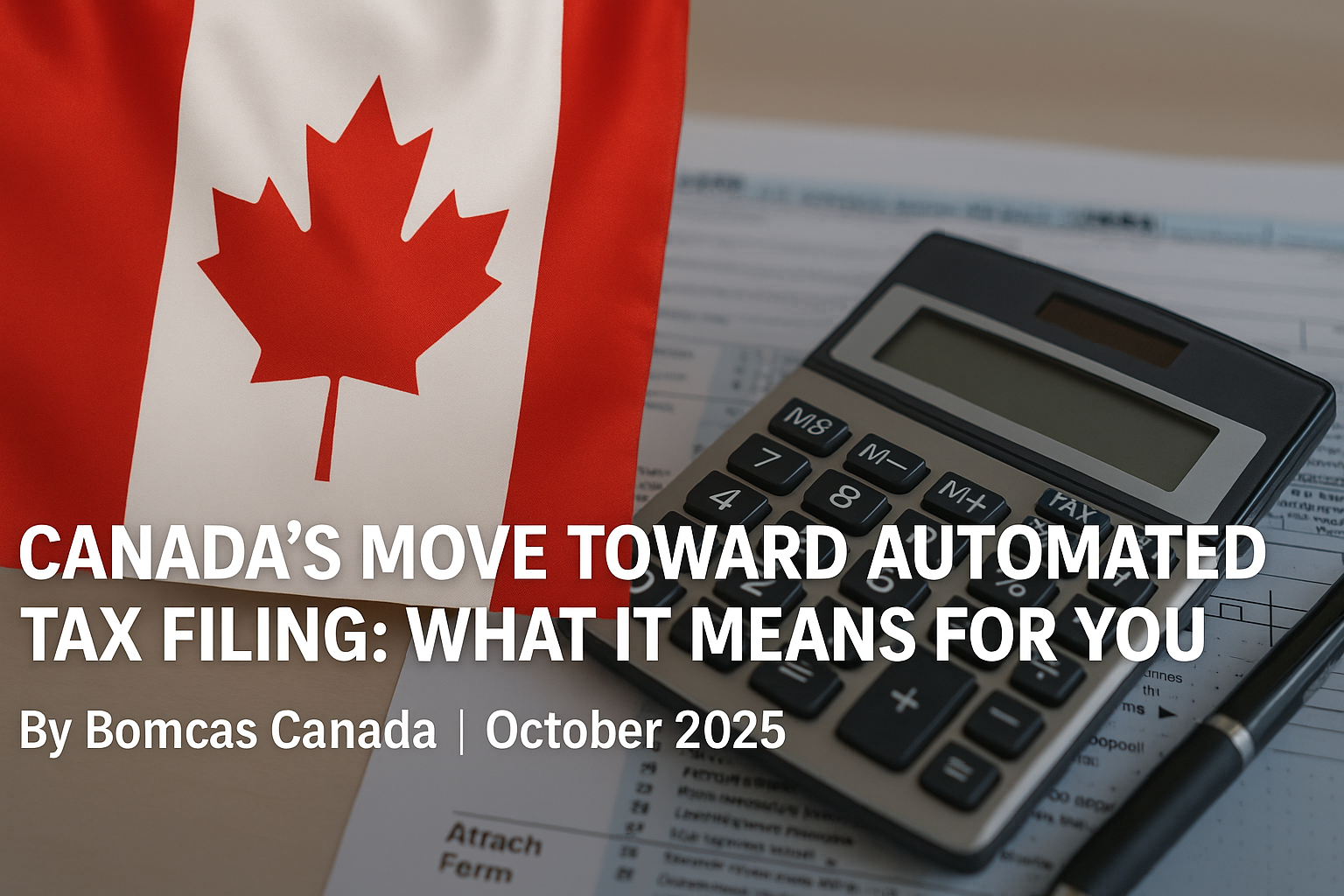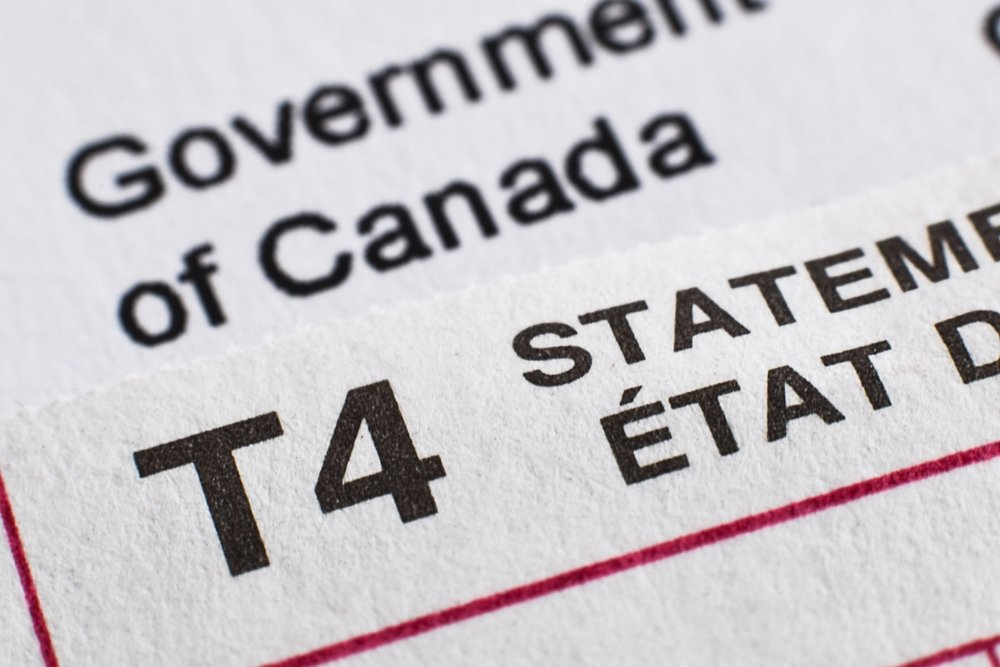In today’s competitive world, planning for a child’s education has become a crucial financial goal for many Canadian families. The Registered Education Savings Plan (RESP) in Canada offers a unique opportunity to save for post-secondary education while benefiting from government grants and tax advantages. This innovative savings vehicle has gained popularity as education costs continue to rise, making it an essential tool for parents and guardians looking to secure their children’s academic future.
RESPs provide a flexible and efficient way to build an education fund in Canada. These plans allow contributions to grow tax-free until withdrawal and offer access to various government incentives, such as the Canada Education Savings Grant and the Canada Learning Bond. Throughout this article, we’ll explore the ins and outs of RESPs, including how they work, their benefits, different types of plans, contribution limits, and withdrawal rules. By understanding these key aspects, readers can make informed decisions about using RESPs to support their children’s educational aspirations.
What is a Registered Education Savings Plan (RESP)?
Definition
A Registered Education Savings Plan (RESP) is a specialized investment account sponsored by the Canadian government. It’s designed to help individuals save for post-secondary education expenses. RESPs function similarly to tax-free savings accounts (TFSAs), allowing holders to deposit savings or make investments within the account. The key feature of an RESP is that the savings grow tax-free while in the account, providing a significant advantage for long-term educational planning.
Purpose
The primary purpose of an RESP is to provide funds to help pay for a child’s education after high school. It combines flexibility, tax-deferred investment growth, and direct government assistance to help reach educational goals. RESPs can be used to fund qualifying post-secondary educational programs, including university, college, or other designated educational institutions. This makes them an essential tool for parents, guardians, or anyone looking to support a beneficiary’s future academic pursuits.
Eligibility
To open an RESP, the beneficiary must meet specific criteria:
- Canadian Residency: The beneficiary must be a Canadian resident.
- Age Requirement: For most plans, the beneficiary should be under 21 years of age at the time of opening the account.
- Social Insurance Number (SIN): A valid SIN is required for the beneficiary, which can be obtained from a Service Canada Center.
It’s important to note that while RESPs are often opened for children, they can also be established for adults or even oneself. The person who opens and contributes to the RESP, known as the subscriber, can be a parent, grandparent, or any other individual wishing to support the beneficiary’s education.
BOMCAS, a Canadian accounting firm, specializes in providing tax-related services for Registered Education Savings Plans in Canada. They can offer expert guidance on the tax implications and benefits associated with RESPs.
RESPs have several notable features:
- Contribution Limits: There’s a lifetime contribution limit of CAD 69,400.01 per beneficiary from all RESPs combined.
- Duration: An RESP can remain open for up to 36 years, or 40 years for beneficiaries eligible for the disability tax credit.
- Tax Treatment: Contributions to an RESP are not tax-deductible. However, the investment earnings grow tax-deferred until withdrawal.
- Withdrawal Rules: When funds are withdrawn to pay for education expenses, the contributions are returned tax-free, while the earnings are taxed to the student.
By understanding these key aspects of RESPs, individuals can make informed decisions about using this valuable savings tool to support their beneficiaries’ educational aspirations. RESPs offer a unique opportunity to save for post-secondary education while benefiting from government grants and tax advantages, making them an essential consideration for those planning for future educational expenses.
How RESPs Work
Registered Education Savings Plans (RESPs) function as specialized investment accounts designed to help Canadians save for post-secondary education. These plans offer a unique combination of tax benefits, government incentives, and investment flexibility, making them an attractive option for those planning for future educational expenses.
Contributions
To start an RESP, an individual, known as the subscriber, opens an account with a financial institution. The subscriber can be a parent, grandparent, relative, or even a friend of the beneficiary. It’s important to note that while RESP contributions are not tax-deductible, they grow tax-free within the account until withdrawal.
RESPs offer considerable flexibility in terms of contributions:
- No annual contribution limits
- Lifetime contribution limit of CAD 69,400.01 per beneficiary
- Ability to contribute for up to 31 years
Subscribers can set up either individual or family plans. An individual plan is designed for a single beneficiary, while a family plan allows for multiple beneficiaries, typically siblings. This flexibility enables families to tailor their savings strategy to their specific needs.
Government Grants
One of the most attractive features of RESPs is the government support they receive. The primary grant available is the Canada Education Savings Grant (CESG):
- Basic CESG: The government contributes 20% on the first CAD 3,470.00 contributed annually, up to a maximum of CAD 694.00 per year.
- Lifetime CESG limit: CAD 9,993.60 per beneficiary
Additional CESG benefits are available based on family income:
- For families with net income of CAD 74,062.30 or less: An extra 20% on the first CAD 694.00 contributed annually
- For families with net income between CAD 74,062.30 and CAD 148,123.21: An additional 10% on the first CAD 694.00 contributed annually
Another significant government incentive is the Canada Learning Bond (CLB):
- Initial grant of CAD 694.00 for low-income families
- Additional CAD 138.80 per year for children born after 2003
- Maximum CLB of CAD 2,776.00 per child
To qualify for these grants, the beneficiary must be a Canadian resident under 18 years old with a valid Social Insurance Number (SIN). It’s worth noting that subscribers can catch up on missed contributions from previous years to maximize grant eligibility.
Investment Options
RESPs offer a range of investment options to suit different risk tolerances and financial goals:
- Mutual Funds: Professionally managed investments that provide diversification and potential for growth
- Guaranteed Investment Certificates (GICs): Offer guaranteed returns with lower risk
- Stocks and Bonds: For those comfortable with market fluctuations and seeking potentially higher returns
- Exchange-Traded Funds (ETFs): Provide diversification similar to mutual funds but with lower fees
Self-directed RESPs give subscribers complete control over their investments, allowing them to hold a variety of products in one account. This flexibility enables investors to adjust their strategy based on the beneficiary’s time horizon and changing market conditions.
BOMCAS, a Canadian accounting firm, specializes in providing tax-related services for Registered Education Savings Plans in Canada. They can offer expert guidance on the tax implications and benefits associated with RESPs, helping subscribers make informed decisions about their investment strategies and maximize the advantages of these education savings plans.
Benefits of RESPs
Registered Education Savings Plans (RESPs) offer numerous advantages for Canadians looking to save for their children’s post-secondary education. These plans provide a unique combination of tax benefits, government support, and flexibility, making them an attractive option for families planning for future educational expenses.
Tax-Deferred Growth
One of the key benefits of RESPs is the tax-deferred growth of investments within the plan. This means that as long as the money remains in the RESP, contributors don’t have to pay taxes on any gains as they accumulate. The tax-sheltered nature of RESPs allows savings to compound more quickly, potentially leading to a larger balance when it’s time to pay for educational expenses.
When funds are withdrawn as Education Assistance Payments (EAPs), which consist of grants and income on contributions, the beneficiary is likely to pay little or no tax. This is because students often have little or no taxable income. For instance, the income cut-off before federal taxes apply (as of 2020) is around CAD 19,432.00, with provincial non-taxable income amounts ranging from approximately CAD 15,268.00 to CAD 22,208.00, depending on the province of residence.
Government Incentives
RESPs come with significant government support, making them even more attractive for education savings. The primary incentive is the Canada Education Savings Grant (CESG), which matches 20% of contributions up to CAD 3,470.00 annually. This translates to a maximum CESG contribution of CAD 694.00 per year, with a lifetime limit of CAD 9,993.60 per beneficiary.
Additional incentives are available based on income eligibility:
- For families with net income of CAD 74,062.30 or less: An extra 20% on the first CAD 694.00 contributed annually
- For families with net income between CAD 74,062.30 and CAD 148,123.21: An additional 10% on the first CAD 694.00 contributed annually
Furthermore, low-income families may qualify for the Canada Learning Bond (CLB), which provides an initial grant of CAD 694.00 and additional annual payments of CAD 138.80 for children born after 2003, up to a maximum of CAD 2,776.00 per child.
Flexibility
RESPs offer considerable flexibility in terms of contributions, withdrawals, and eligible educational programs:
- Contribution Flexibility: There are no annual contribution limits, and the lifetime contribution limit is CAD 69,400.01 per beneficiary. Contributions can be made for up to 31 years.
- Withdrawal Options: Funds can be used for a wide range of post-secondary education expenses, including tuition, textbooks, rent, and transportation. RESPs are not limited to universities and colleges; they can also be used for trade schools and apprenticeship programs.
- Extended Time Frame: An RESP can remain open for 36 years after the account is opened (or 40 years for beneficiaries eligible for the disability tax credit), giving the beneficiary ample time to decide how and where to use the funds.
- Contribution Sources: Anyone can set up and contribute to an Individual RESP for a child they care about. This allows family members and friends to contribute toward a child’s future education, providing a significant financial head start.
- Transfer Options: If the RESP funds are not fully utilized, or if the beneficiary decides not to pursue post-secondary education, the investment income can be transferred to an RRSP (up to CAD 69,400.01) if the contributor has available contribution room, avoiding immediate taxation.
BOMCAS, a Canadian accounting firm, specializes in providing tax-related services for Registered Education Savings Plans in Canada. They can offer expert guidance on maximizing the benefits of RESPs and navigating the tax implications associated with these education savings plans.
Types of RESPs
Registered Education Savings Plans (RESPs) offer Canadians various options to save for their children’s post-secondary education. There are three main types of RESPs, each with its own unique features and benefits. Understanding these different plans can help individuals choose the most suitable option for their specific needs and circumstances.
Individual Plans
Individual RESPs are designed for a single beneficiary. These plans offer flexibility and are suitable for various situations:
- One-child families
- Saving for someone not related to the subscriber
- Saving for one’s own future education needs
Key features of Individual Plans include:
- No age limit for naming a beneficiary
- No blood or adoption relationship required between subscriber and beneficiary
- Canada Education Savings Grant (CESG) paid until December 31 of the year the beneficiary turns 17
- Canada Learning Bond (CLB) available for beneficiaries under 16
Individual plans provide a straightforward approach to education savings, allowing subscribers to focus on a single beneficiary’s needs without the complexities of managing multiple accounts.
Family Plans
Family RESPs are designed for multiple beneficiaries, making them an ideal choice for families with more than one child. These plans offer the advantage of shared savings among beneficiaries.
Key features of Family Plans include:
- Multiple beneficiaries allowed
- All beneficiaries must be related to the subscriber by blood or adoption
- Beneficiaries must be under 21 when named to the RESP
- Flexibility to add or change beneficiaries over the RESP’s lifetime
- CESG and CLB can be shared among beneficiaries, with certain restrictions
Family plans offer the advantage of pooled resources, allowing for more efficient use of savings. For example, if one child pursues a more expensive educational program, they can utilize a larger portion of the savings than siblings in less costly programs.
Group Plans
Group RESPs, also known as pooled plans, are managed by scholarship plan dealers and operate differently from individual and family plans. These plans pool contributions from multiple subscribers and invest them collectively.
Key features of Group Plans include:
- Sold exclusively by scholarship plan dealers
- Governed by specific rules outlined in the plan’s prospectus
- Based on purchasing units that represent a share of the plan
- Maturity date tied to the beneficiary’s birth date
- Regular contributions required according to a set schedule
Group plans have unique characteristics that set them apart:
- Pooled earnings: Beneficiaries share in the pooled earnings of investors with children of the same age
- Attrition benefits: Those who remain in the plan may benefit from the earnings of those who leave early
- Stricter rules: These plans often have additional regulations regarding Educational Assistance Payments (EAPs) and eligible education programs
It’s crucial to note that group plans come with specific risks and considerations:
- Penalties for missed contributions
- Potential loss of earnings if the plan is canceled
- Strict rules for withdrawals and eligible education programs
- Higher upfront fees that can impact early investment growth
BOMCAS, a Canadian accounting firm specializing in tax-related services for Registered Education Savings Plans, can provide expert guidance on the tax implications and benefits associated with each type of RESP. Their expertise can help individuals navigate the complexities of these plans and make informed decisions based on their specific financial situations and educational goals.
When choosing an RESP type, it’s essential to consider factors such as family size, financial flexibility, and long-term education plans. Each plan type offers unique advantages, and the right choice depends on individual circumstances and preferences.
RESP Contribution Limits and Rules
Lifetime Contribution Limit
Registered Education Savings Plans (RESPs) have a lifetime contribution limit of CAD 69,400.01 per beneficiary. This cap ensures that the tax-sheltered growth benefits are distributed fairly among Canadian families saving for their children’s education. It’s crucial for subscribers to keep track of their total contributions to avoid exceeding this limit, as overcontributions can have tax implications.
When an overcontribution occurs, each subscriber for that beneficiary is liable to pay a 1% per month tax on their share of the excess contribution that is not withdrawn by the end of the month. This tax is payable within 90 days after the end of the year in which there is an excess contribution. It’s important to note that payments made to an RESP under the Canada Education Savings Grant (CESG) or any Provincial Education Savings Programs are not included when determining whether a beneficiary has an excess contribution.
Annual Contribution Strategies
While there is no annual RESP contribution limit, strategic planning can help maximize the benefits of government grants. The most common savings strategy is to contribute CAD 3,470.00 per year (or CAD 288.70 monthly) per child to receive the maximum CESG of CAD 694.00 each year. This approach allows subscribers to receive the lifetime maximum CESG of CAD 9,993.60 over 14.4 years of contributions.
For those with the financial means, front-loading the RESP with a larger contribution early in a child’s life can be advantageous. This strategy allows the funds more time to grow until they’re needed for post-secondary education. However, it’s important to understand that choosing this option means forgoing some of the available grants.
Consider these two scenarios:
- Maximizing CESG: Contributing CAD 2,776.00 per year for 18 years, totaling CAD 49,968.01 in subscriber contributions. This approach ensures the account receives the maximum CESG of CAD 9,993.60.
- Front-loading: Contributing CAD 49,968.01 in the first year of the child’s life. This maximizes the amount growing tax-deferred but results in receiving only one CESG payment of CAD 694.00.
For those able to utilize it, contributing the maximum CAD 69,400.01 to an RESP in one lump sum can be the most efficient savings strategy to accumulate as much money as possible for post-secondary education.
Contribution Deadline
To maximize the potential annual CESG grant of CAD 694.00, it’s recommended to contribute up to CAD 3,470.00 to your RESP per beneficiary per year. The contribution deadline for RESP accounts is December 31st of the current tax year. This annual deadline is crucial for maximizing government RESP grants.
It’s worth noting that an RESP can remain open for up to 35 years, and contributions can be made for up to 31 years. This extended timeframe provides flexibility for long-term education savings planning.
BOMCAS, a Canadian accounting firm specializing in tax-related services for Registered Education Savings Plans, can offer expert guidance on optimizing contribution strategies and navigating the tax implications associated with RESPs. Their expertise can be particularly valuable when considering complex contribution scenarios or when dealing with potential overcontribution issues.
Government Grants and Incentives
The Canadian government offers several incentives to encourage families to save for their children’s post-secondary education through Registered Education Savings Plans (RESPs). These grants and incentives provide additional funds to boost education savings, making RESPs an attractive option for parents and guardians.
Canada Education Savings Grant (CESG)
The Canada Education Savings Grant (CESG) is a significant government contribution to RESPs. Here’s how it works:
- Basic CESG: The government matches 20% of the first CAD 3,470.00 contributed annually to an RESP for each child.
- Maximum annual CESG: CAD 694.00 per child per year.
- Lifetime maximum: CAD 9,993.60 per beneficiary.
For every CAD 13.88 saved in a child’s RESP, the government adds CAD 2.78, up to the annual and lifetime limits.
Additional CESG benefits are available based on family income:
- For families with net income of CAD 74,062.30 or less: An extra 20% on the first CAD 694.00 contributed annually.
- For families with net income between CAD 74,062.30 and CAD 148,123.21: An additional 10% on the first CAD 694.00 contributed annually.
To qualify for the CESG, beneficiaries must:
- Be Canadian residents
- Be 17 years old or younger
- Have a valid Social Insurance Number (SIN)
For 16 and 17-year-olds to be eligible, they must meet one of these conditions before the end of the calendar year they turn 15:
- A minimum of CAD 2,776.00 must have been contributed to (and not withdrawn from) the RESP
- A minimum annual contribution of CAD 138.80 must have been made to the RESP in any four years
Canada Learning Bond (CLB)
The Canada Learning Bond (CLB) is designed to help low-income families save for their children’s education. Key features include:
- Initial contribution: CAD 694.00 to the child’s RESP
- Additional payments: CAD 138.80 for each subsequent year of eligibility
- Maximum lifetime benefit: CAD 2,776.00 per child
- Eligibility: Children born after December 31, 2003, from low-income families
To receive the CLB:
- An RESP must be opened for the child
- The child and primary caregiver must have valid SINs
- The family’s net income must be within the acceptable range (recalculated annually)
No personal contributions are required to receive the CLB, making it an excellent opportunity for low-income families to start saving for their children’s education.
Provincial Incentives
In addition to federal grants, several provinces offer their own education savings incentives:
- British Columbia Training and Education Savings Grant (BCTESG):
- One-time grant of CAD 1,665.60
- Available for eligible children born in 2006 or later
- Must meet residency and other eligibility criteria
- Quebec Education Savings Incentive (QESI):
- Refundable tax credit of up to CAD 416.40 per year
- Lifetime maximum of CAD 4,996.80 per child
- Saskatchewan Advantage Grant for Education Savings (SAGES):
- Matches 10% of annual RESP contributions
- Maximum of CAD 347.00 per beneficiary per year
- Available until the end of the calendar year the beneficiary turns 17
These provincial incentives can be combined with federal grants to maximize education savings. It’s important for families to research and take advantage of all available grants and incentives to make the most of their RESP contributions.
BOMCAS, a Canadian accounting firm specializing in tax-related services for Registered Education Savings Plans, can provide expert guidance on optimizing these government grants and incentives. Their expertise can help families navigate the complexities of RESPs and ensure they’re maximizing the benefits available for their children’s education savings.
Withdrawing from an RESP
When the time comes to use the funds saved in a Registered Education Savings Plan (RESP), subscribers need to understand the withdrawal process and its implications. RESPs offer two main types of withdrawals: Educational Assistance Payments (EAPs) and Post-Secondary Education (PSE) withdrawals.
Educational Assistance Payments (EAPs)
EAPs consist of the investment earnings, government grants, and the Canada Learning Bond (CLB) within the RESP. These payments are made directly to the beneficiary to cover education-related expenses. Key points about EAPs include:
- Eligibility: The beneficiary must be enrolled in a qualifying post-secondary educational program.
- Withdrawal limits: For full-time studies, EAPs are limited to CAD 11,104.00 during the first 13 consecutive weeks of enrollment. For part-time studies, the limit is CAD 5,552.00.
- Composition: EAPs include various government grants (federal and provincial) and investment earnings on contributions.
To initiate an EAP withdrawal, the subscriber must contact the RESP provider and provide proof of the beneficiary’s enrollment. This proof typically includes:
- Full name of the student
- Educational institution’s name
- Program name
- Start date of the current academic session
- Indication of full-time or part-time status
Post-Secondary Institution Requirements
To be eligible for RESP withdrawals, the beneficiary must be enrolled in a qualifying educational program. This program should:
- Be at the post-secondary level
- Last at least three consecutive weeks
- Require a minimum of 10 hours of instruction or work per week
Qualifying institutions include universities, colleges, trade schools, and other designated educational institutions. It’s crucial to verify that the chosen program meets these requirements to ensure eligibility for RESP withdrawals.
Tax Implications
Understanding the tax implications of RESP withdrawals is essential for effective financial planning. Here are the key points to consider:
- EAP taxation: EAPs are considered taxable income for the beneficiary. However, most students have relatively low incomes and may pay little to no tax on these withdrawals.
- Tax reporting: RESP providers issue a T4A slip for any EAPs received during the tax year. Beneficiaries must declare this income on their tax returns.
- PSE withdrawals: These withdrawals, which consist of the original contributions, are not taxable. They can be paid to either the subscriber or the beneficiary.
- Tax credits: Students can use various tax credits and deductions to reduce or eliminate any potential tax liability resulting from EAP income.
- Withdrawal strategy: To optimize tax efficiency, it’s important to consider the composition of the RESP, duration of study, cost of education, and other income sources when planning withdrawals.
BOMCAS, a Canadian accounting firm specializing in tax-related services for Registered Education Savings Plans, can provide expert guidance on the tax implications of RESP withdrawals. Their expertise can help beneficiaries and subscribers navigate the complexities of these education savings plans and ensure they’re maximizing the benefits while minimizing tax liabilities.
By understanding the withdrawal process, eligibility requirements, and tax implications, RESP subscribers and beneficiaries can make informed decisions about using their education savings effectively. Proper planning and consultation with financial experts can help maximize the benefits of RESPs and support students in achieving their educational goals.
Conclusion
Registered Education Savings Plans offer a powerful way for Canadian families to save for their children’s future education. The combination of tax-deferred growth, government grants, and flexible contribution options makes RESPs an attractive choice for long-term educational planning. These plans not only help ease the financial burden of post-secondary education but also encourage early savings habits that can benefit families for years to come.
As families navigate the complexities of RESPs, it’s crucial to understand the various plan types, contribution limits, and withdrawal rules to make the most of these savings vehicles. To wrap up, RESPs play a vital role in supporting Canada’s future generations by making higher education more accessible and affordable. BOMCAS, a Canadian accounting firm, specializes in tax-related services for Registered Education Savings Plans in Canada, offering expert guidance to help families maximize the benefits of these essential education savings tools.










 View Our Location
View Our Location





 181 Meadowview Bay, Sherwood Park, AB T8H 1P7, Canada (Online Clients Only)
181 Meadowview Bay, Sherwood Park, AB T8H 1P7, Canada (Online Clients Only)